14 Rare Antique Dishware Pieces That Are Worth a Fortune
Antique dishware can hold incredible value, often surpassing what many expect. The rarity and history behind certain pieces make them highly sought after by collectors. Many dishware sets have unique features that add to their worth. If you are a collector or just starting, understanding the value of these pieces can be rewarding. Let us take a look at some of the rarest antique dishware that might be hiding in your collection.
This post may contain affiliate links, which helps keep this content free. Please read our disclosure for more info.
Meissen Porcelain Plates

Meissen porcelain has been crafted in Germany since the early 18th century. These plates are known for their fine craftsmanship, often featuring intricate hand-painted designs. They are made from high-quality porcelain, giving them a delicate and glossy finish. Depending on the design and condition, Meissen porcelain plates can be valued anywhere from $500 to $15,000, with rare pieces fetching even higher prices.
Meissen porcelain remains in demand among collectors, and many pieces are still sold at auction. The company continues to produce new items, but antique pieces with historical significance are much more valuable. The market value depends on the age, condition, and rarity of the design. Finding authentic Meissen items today can be a challenge due to their popularity and demand.
Royal Worcester Dinnerware

Royal Worcester has been producing fine porcelain in England since 1751. This dinnerware collection is known for its detailed, delicate patterns and use of gold and platinum accents. These pieces are made from the highest quality porcelain, ensuring durability and a luxurious finish. Depending on the piece, Royal Worcester dinnerware can range from $300 to several thousand dollars, with some rare designs reaching upwards of $10,000.
While many of these dishes are still produced by Royal Worcester today, the older and rarer items are highly prized. They are often found at antique shops or auctions, but their value is influenced by condition and rarity. The company’s historical significance and detailed craftsmanship make its antique dishes valuable collector’s items. You will find the highest market value in the most well-preserved pieces.
Limoges China
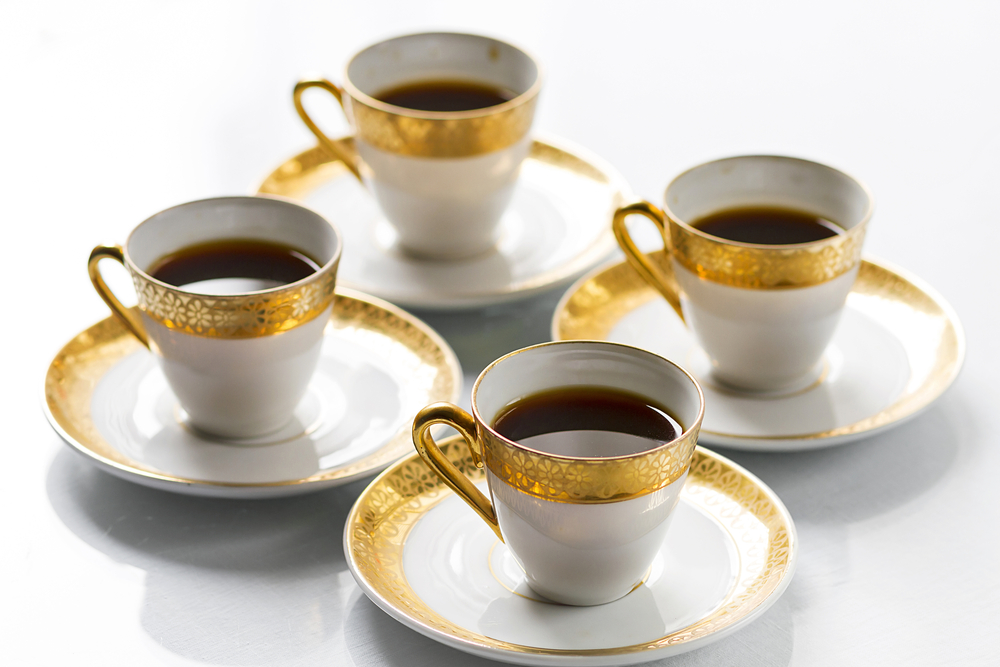
Limoges china is known for its superior quality and has been crafted in France since the 18th century. These pieces are made from fine porcelain and often feature intricate floral patterns, gold leafing, and hand-painted designs. Limoges china sets can vary in price, but certain antique sets are valued between $1,000 and $30,000 depending on the rarity and craftsmanship of the pattern.
Though Limoges continues to be produced today, antique pieces are more sought after due to their historical significance and artistic value. The market for Limoges china remains strong, with collectors eager to acquire well-preserved sets. The most valuable pieces are those that date back to the 19th century and are in excellent condition. Limoges remains a top contender in the world of antique dishware.
Wedgwood Jasperware Plates
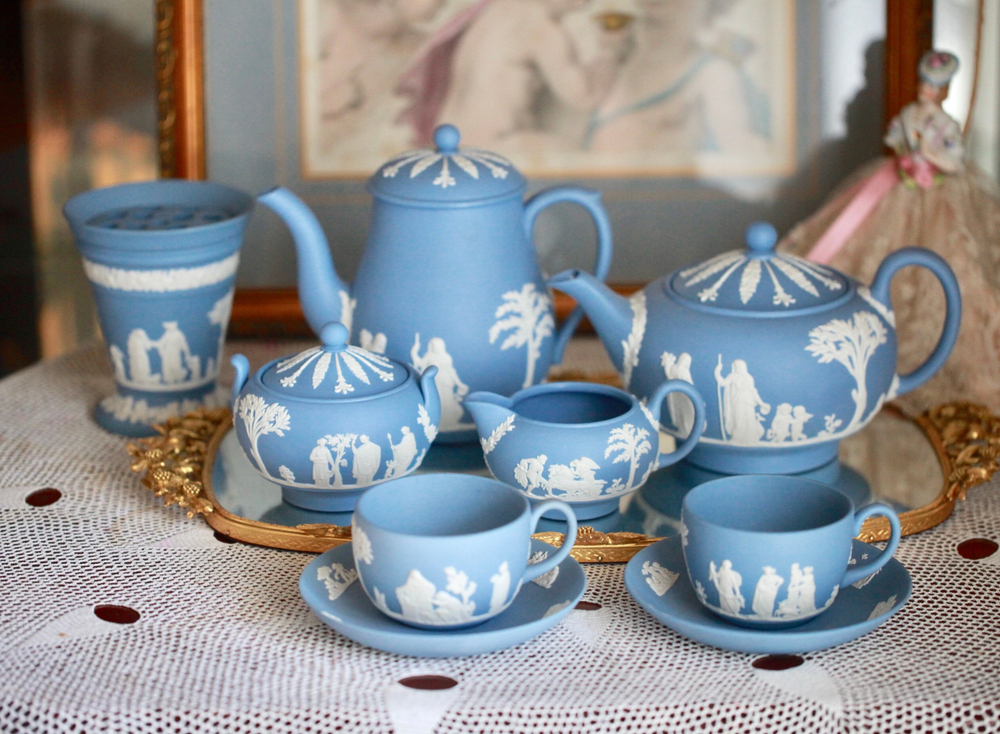
Wedgwood Jasperware, introduced in 1775, is renowned for its unique combination of matte, colored porcelain and bas-relief designs. These plates are made from fine stoneware and are most often seen in colors like blue, green, and black. The plates’ value can range from $300 for smaller, common pieces to $10,000 or more for rare designs or full sets.
Although Wedgwood still manufactures products today, the older Jasperware pieces hold a special place in the hearts of collectors. The rarity of certain designs, especially those made in the 18th and early 19th centuries, makes them highly valuable. You can find some of these plates at auctions or specialty antique stores. Their long-lasting popularity ensures that they will continue to command high prices in the future.
Staffordshire China
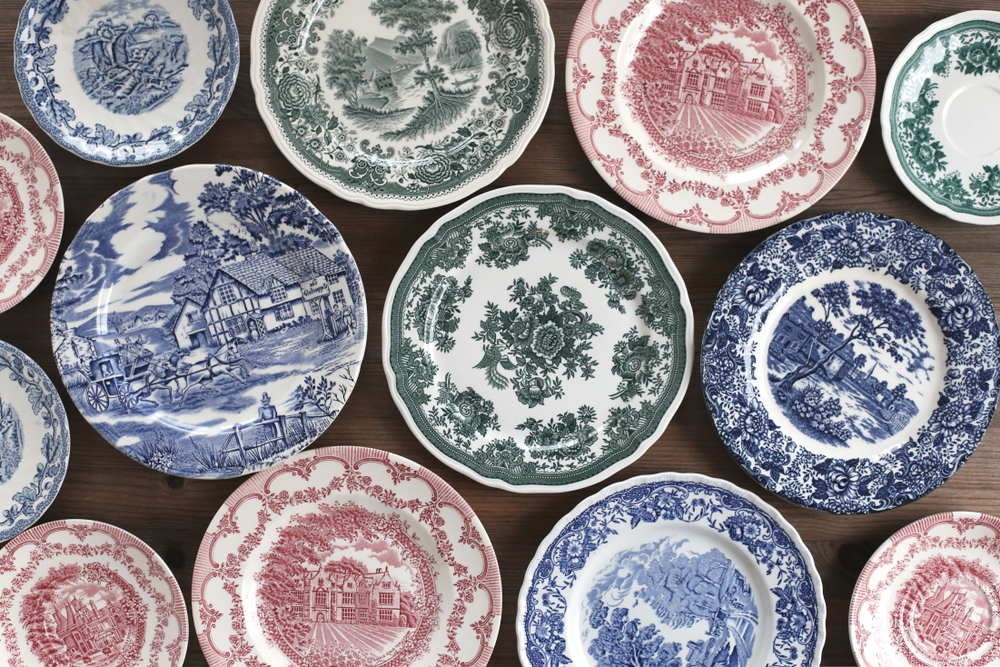
Produced in England since the 18th century, Staffordshire china is recognized for its detailed figures, especially those depicting animals and people. The pieces are made from high-quality earthenware, often featuring bright, bold patterns. Staffordshire china can range in value from $200 to $10,000, depending on the rarity of the design and its condition.
Staffordshire pieces are still made today, but the antique items are significantly more valuable. Rare figurines, especially those from the Georgian and Victorian periods, are highly sought after by collectors. The market for Staffordshire china remains strong, with many pieces available at auctions and estate sales. Their enduring popularity ensures they maintain a solid value in the collector’s market.
Royal Copenhagen Plates
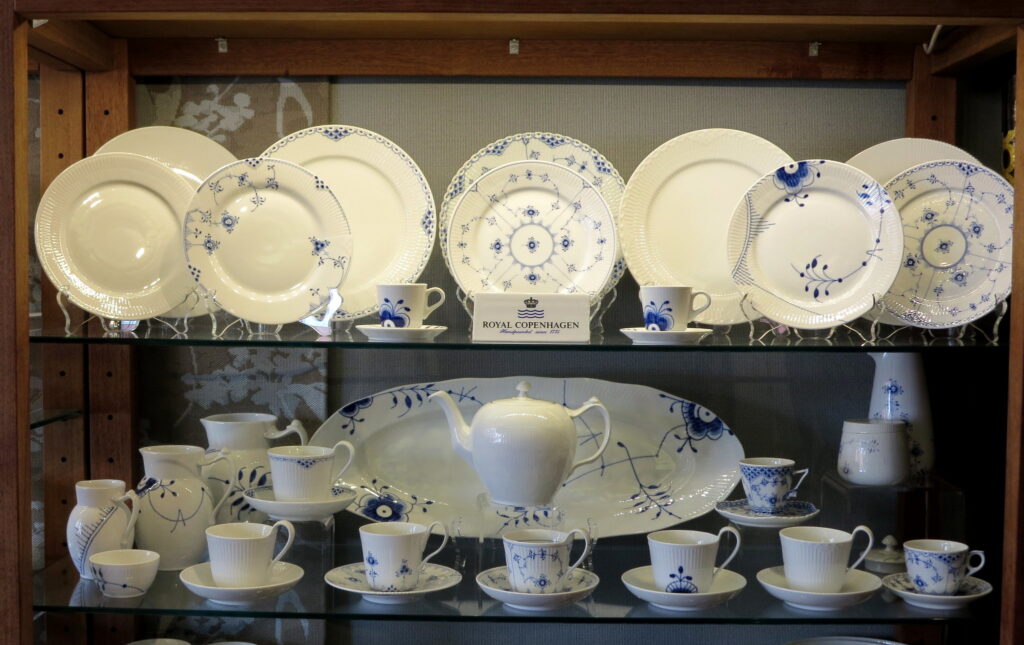
Royal Copenhagen porcelain has been produced in Denmark since 1775 and is known for its delicate craftsmanship and intricate designs. These plates are made from fine porcelain and often feature hand-painted floral motifs or scenes from Danish history. Prices for antique Royal Copenhagen plates vary widely, ranging from $400 to $5,000 or more, depending on the rarity and condition.
The brand continues to produce new items today, but the older, vintage plates are the most valuable. Collectors seek out specific patterns and colors, especially those created in the 19th century. Royal Copenhagen plates are highly regarded in the world of antique dishware and continue to be sold at auctions. Their detailed craftsmanship and historical value ensure they remain in demand.
Chelsea Porcelain Plates
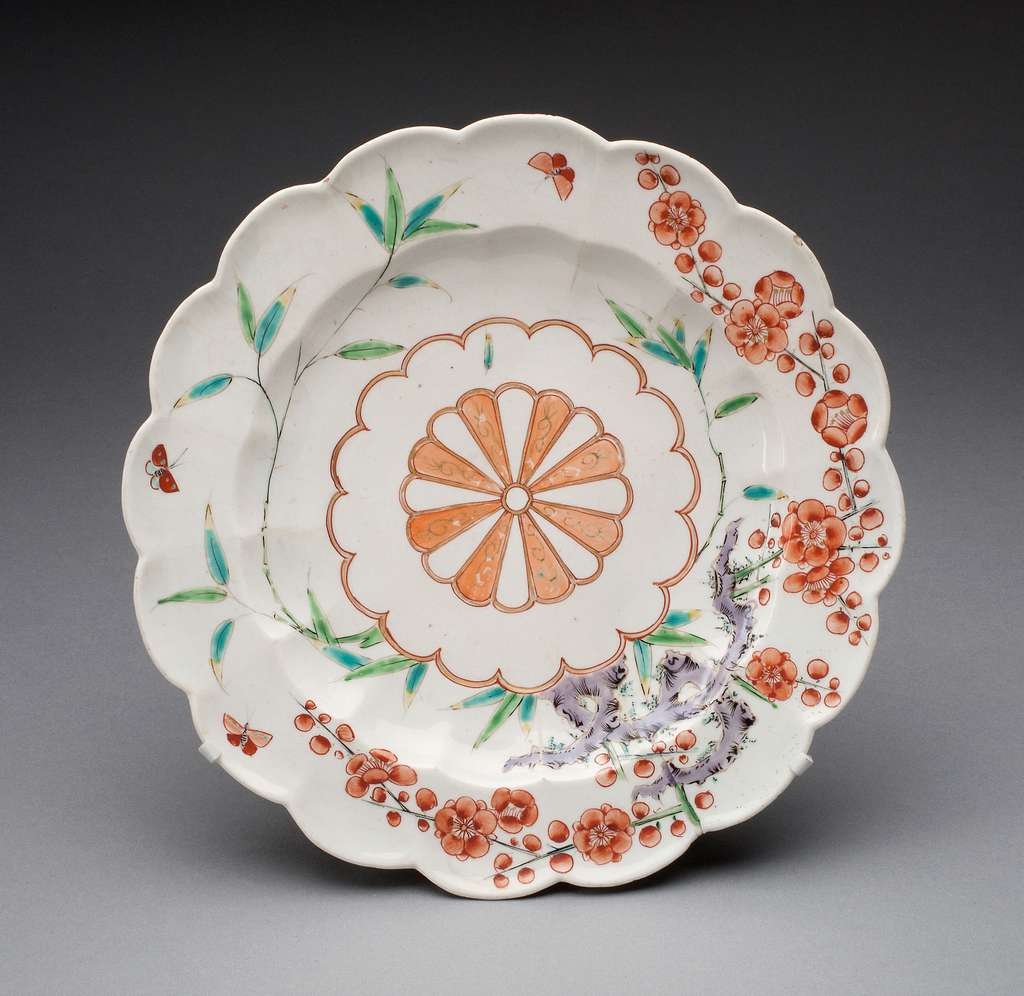
Chelsea porcelain, produced in England from 1745 to 1784, is known for its high-quality porcelain and elegant designs. These plates are often decorated with floral patterns, animals, or chinoiserie influences, and they are made from the finest porcelain. Chelsea plates can range in value from $500 to $25,000, with rare designs or well-preserved sets reaching even higher prices.
Chelsea porcelain is no longer produced, but the original pieces remain highly valuable among collectors. Many antique Chelsea porcelain items are sold through specialist auctions, where they attract serious bidders. The rarity and historical significance of these plates make them a prized possession. Their market value is driven by both their artistic appeal and their limited availability.
Minton China

Minton china, produced in England since 1793, is renowned for its elegant designs and high-quality craftsmanship. Minton plates are often decorated with floral patterns, neoclassical motifs, or intricate borders. Depending on the design and rarity, Minton china pieces can range from $300 to $10,000 or more, with certain rare sets reaching even higher values.
Minton china is still produced today, but the antique pieces from the 19th century hold the most value. Collectors especially seek out pieces with distinctive patterns and high-quality finishes. The market for Minton china remains strong, with many pieces found at antique shops or auction houses. Well-preserved examples of Minton’s early work can command impressive prices.
Bristol dinnerware
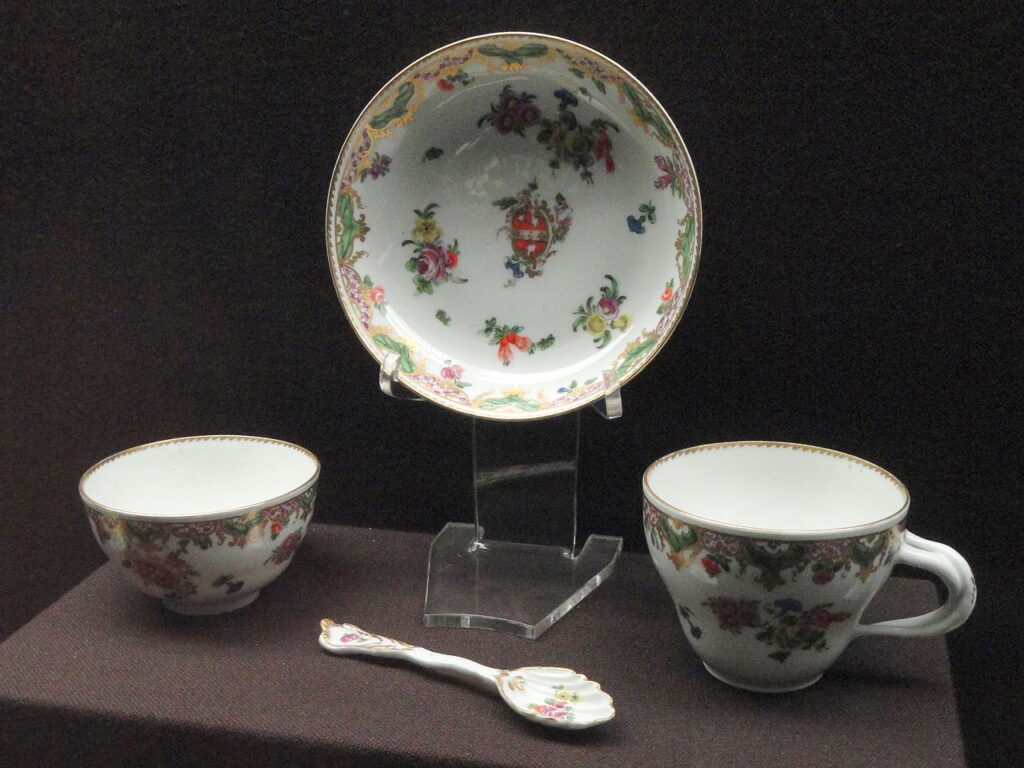
Bristol dinnerware, crafted in England during the 18th and 19th centuries, is known for its vibrant colors and unique designs. These glass pieces are made from a fine type of glass that often features hand-painted floral designs or etched patterns. Prices for Bristol glass can vary, with common pieces worth a few hundred dollars and rare items reaching $5,000 or more.
While Bristol dinnerware is no longer in production, antique pieces are highly valued in the market. Collectors focus on glass vases, bowls, and decanters with distinctive color patterns or detailed etchings. The rarity of these items, combined with their beauty, ensures they remain a sought-after collectible. Finding well-preserved pieces can be challenging but rewarding for collectors.
Spode Blue Italian Dinnerware
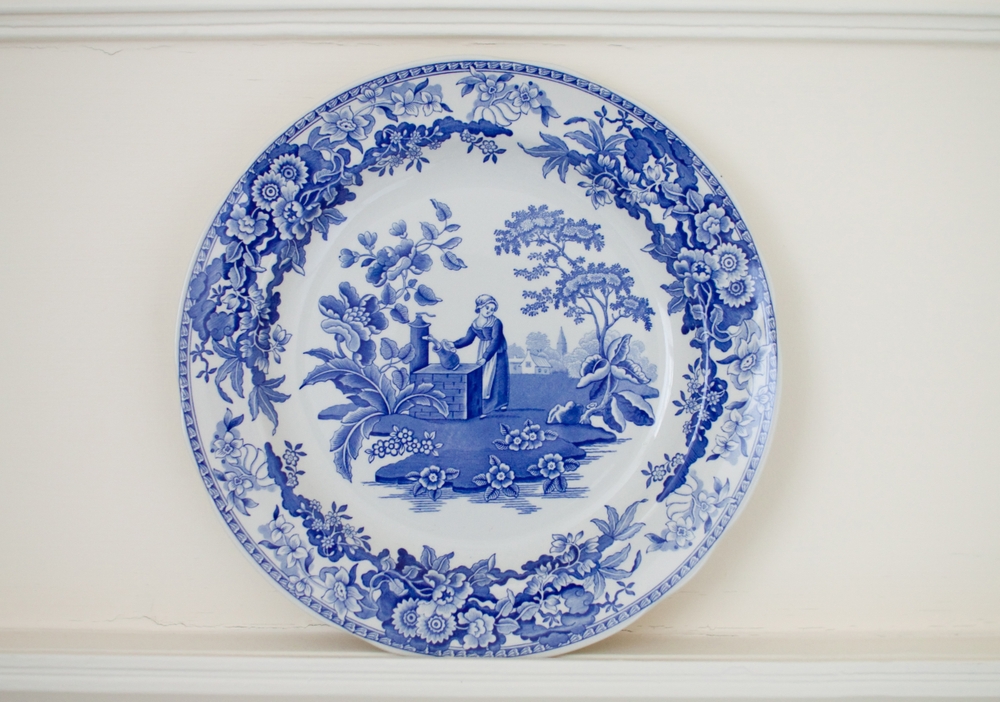
Spode Blue Italian dinnerware, introduced in 1816, is known for its iconic blue-and-white design depicting Italian countryside scenes. Made from fine earthenware, it is a popular choice for collectors due to its distinctive style and craftsmanship. Antique Spode Blue Italian pieces can range from $300 to $8,000, with full sets or rare pieces fetching higher prices.
While Spode continues to produce Blue Italian dinnerware today, older pieces from the 19th and early 20th centuries are the most sought after. These items are often found at antique shops or auctions, where their value is determined by the age and condition. Collectors prize these pieces for their intricate design and historical charm. They remain highly valued in the dishware market.
Villeroy and Boch Floral Plates
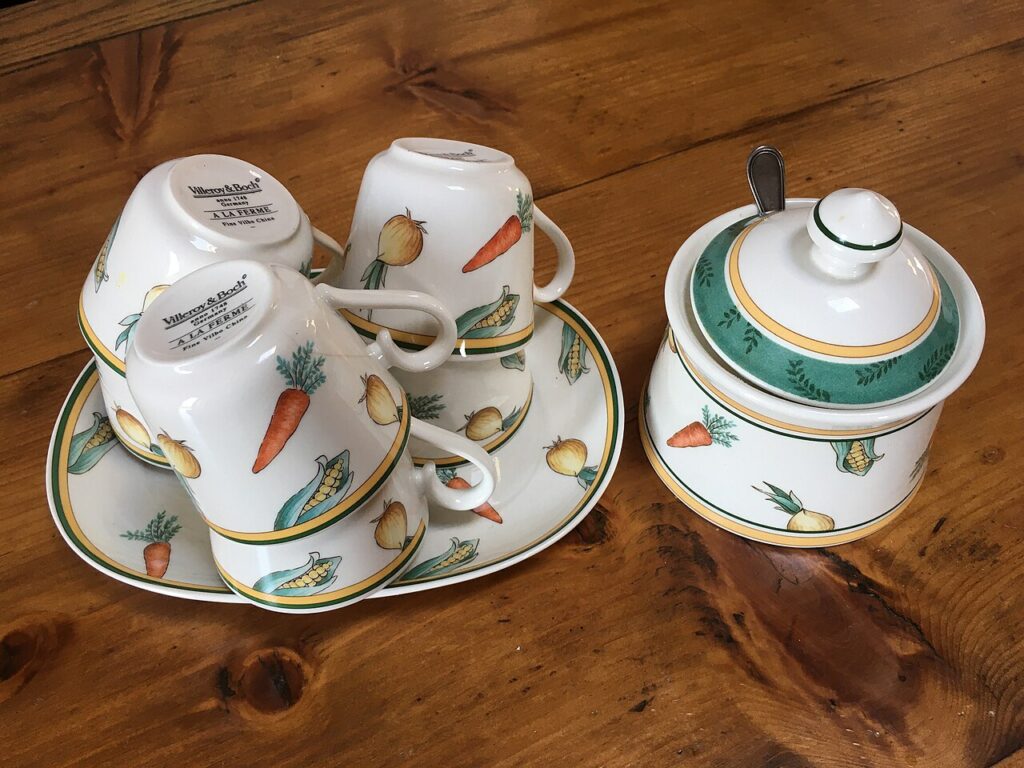
Villeroy and Boch, a German company, has been producing high-quality porcelain since 1748. Their floral plates, often featuring vibrant and detailed hand-painted designs, are particularly popular among collectors. These pieces can range in value from $500 to $8,000, with rare or limited-edition patterns fetching even more.
While Villeroy and Boch continues to produce porcelain items, the antique floral plates from the 18th and 19th centuries are more highly sought after. The beauty and craftsmanship of these plates make them valuable collector’s items. The strong demand for vintage Villeroy and Boch porcelain ensures that they maintain their market value. You can find these pieces at specialist auctions or high-end antique stores.
Belleek China
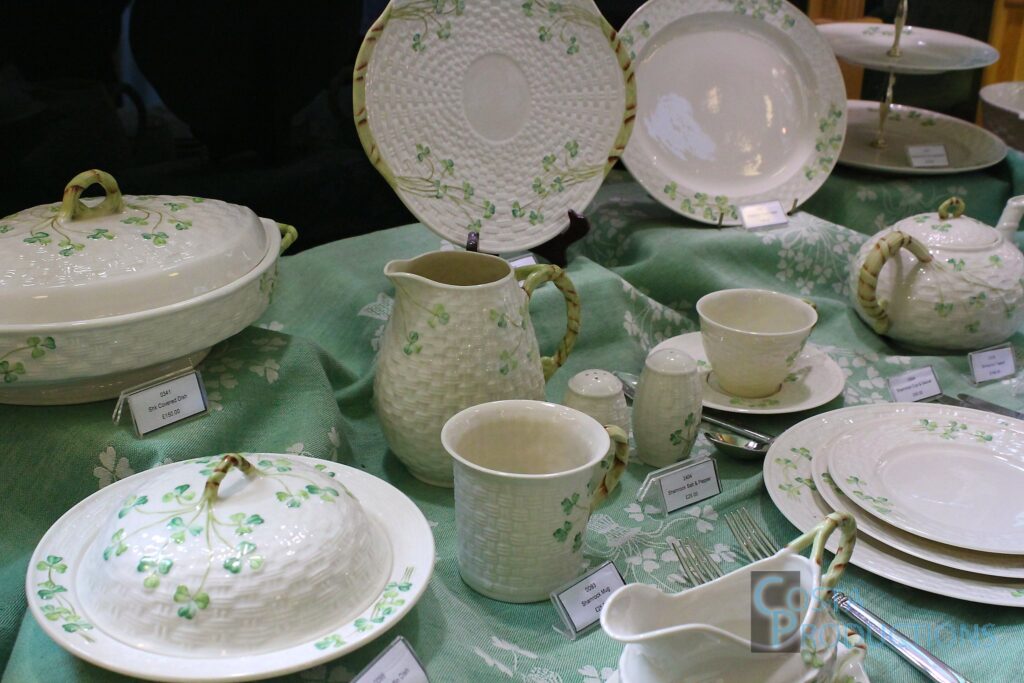
Belleek china, first produced in Northern Ireland in 1857, is known for its delicate appearance and intricate hand-painted designs. These pieces are made from fine porcelain, often featuring floral motifs or scenes inspired by nature. Belleek china is valued between $200 and $5,000, with rare and well-preserved pieces reaching higher prices.
While Belleek continues to produce china today, antique items are highly valued by collectors. The company’s focus on craftsmanship and its long history of producing fine porcelain contributes to the high value of vintage pieces. Belleek china, especially from the 19th century, remains a highly prized collectible. The intricate designs and historical significance make it an attractive option for collectors.
Haviland Limoges Dinnerware
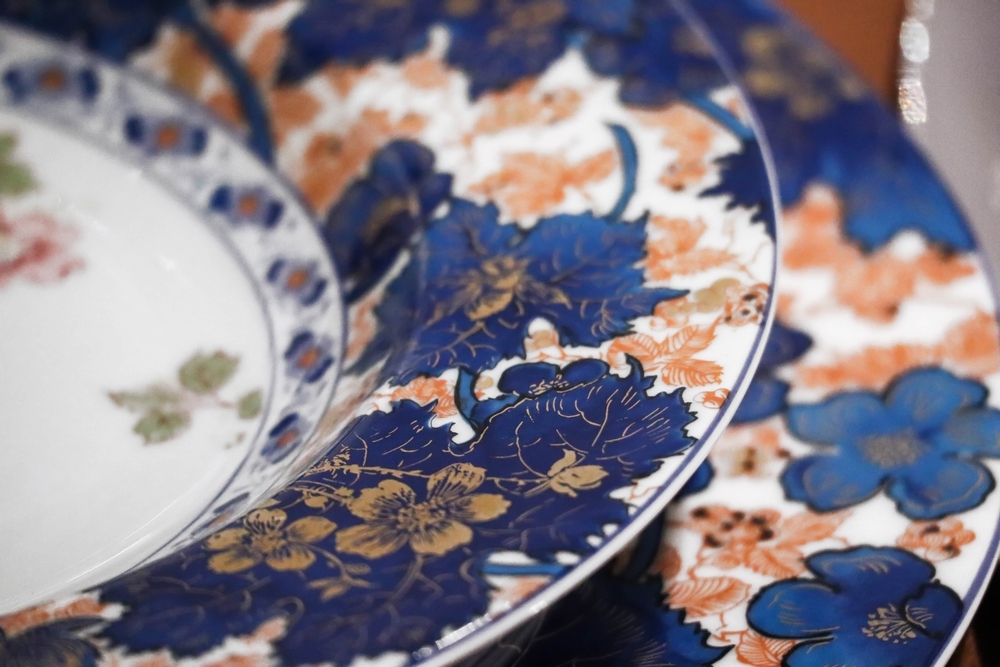
Haviland Limoges, produced in France, is renowned for its fine porcelain dinnerware, often featuring intricate floral and gold designs. The pieces are crafted from high-quality porcelain, making them durable and visually stunning. Depending on the design and condition, Haviland Limoges dinnerware can range from $500 to $15,000, with rare sets or individual pieces fetching even higher values.
While Haviland Limoges continues to produce dinnerware today, antique pieces are the most valuable. The historical significance and refined craftsmanship of the older pieces make them highly sought after by collectors. Antique Haviland Limoges dinnerware is typically found at auctions, antique stores, or estate sales. Their continued popularity ensures they remain valuable items in the market.
Bohemian Dinnerware
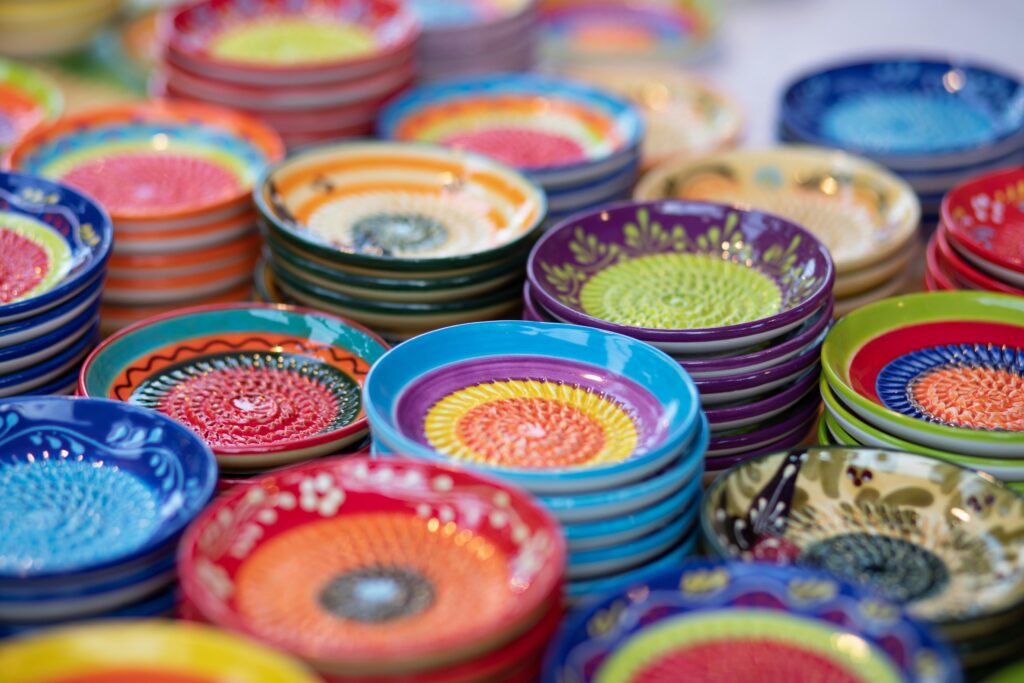
Bohemian dinnerware, produced in the Czech Republic since the 16th century, is known for its rich colors and detailed craftsmanship. These pieces are made from glass, often featuring intricate designs and gold or silver accents. Bohemian dinnerware can range from $100 for common pieces to $10,000 or more for rare items like vases or chandeliers.
Bohemian dinnerware is still produced today, but vintage pieces are much more valuable due to their age and artistry. Collectors seek out colorful glass pieces with detailed engravings or hand-painted designs. The demand for Bohemian glass continues to grow, particularly for pieces dating back to the 19th century. Their timeless appeal and fine craftsmanship ensure that these pieces remain valuable in the marketplace.
The world of antique dishware is full of hidden treasures that are worth exploring. From delicate porcelain to intricate glass designs, these rare items offer both beauty and value.
This article originally appeared on Avocadu.
